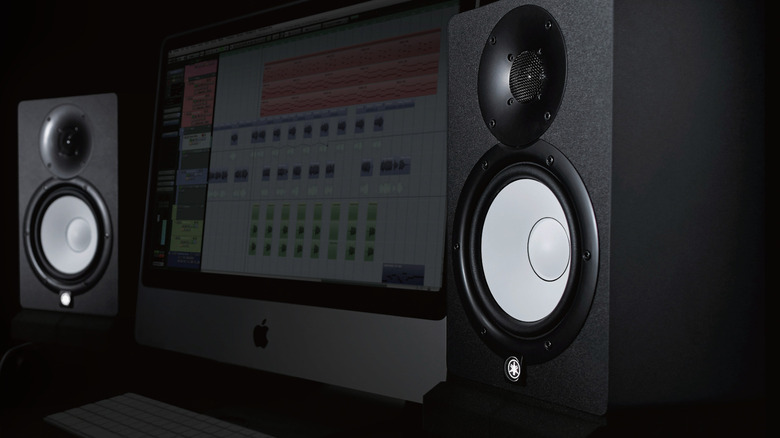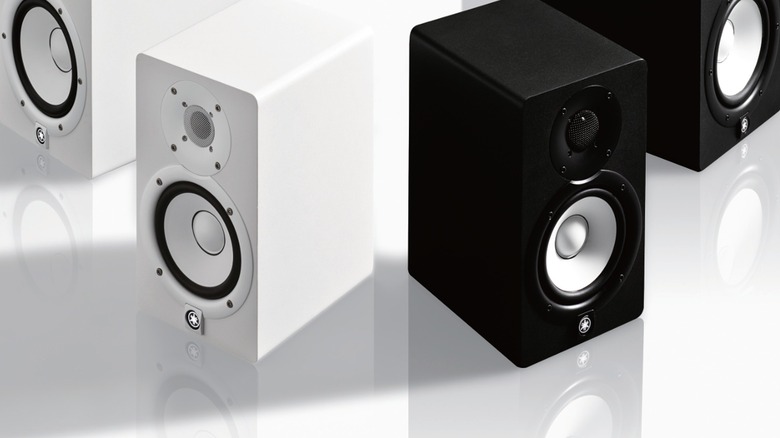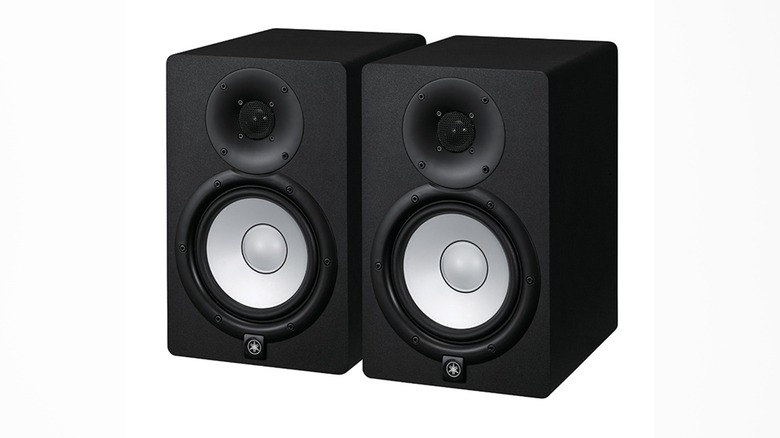Yamaha HS7 Vs. HS8: What's The Difference Between These Two Studio Monitors?
Mixing music without a pair of the best studio monitors is a bit like driving with your windshield fogged up. You might be able to see things on the road, but they're blurry, which means you're more likely to make a mistake. Similarly, without studio monitors to play your mix back accurately, you'll be hearing a distorted version of the song you're working on. After choosing your DAW, your choice of monitors is among the most important ones you'll make for your studio. And when musicians, producers, or audio engineers select their monitors, a pair of Yamaha HS7 or HS8s is always a tempting option.
My Yamahas are the backbone of my production setup, having served me well for nearly a decade, and like many other producers, I fell in love from the moment I first switched them on. From those like me who produce in a bedroom to the top hip-hop producers like Metro Boomin, DJs like Marshmello who perform at packed EDM festivals, and even pop stars like Billie Eilish's brother and producer Finneas, Yamaha HS monitors are ubiquitous. There's a high likelihood that many of your favorite songs were referenced on them.
But once you've decided to scoop up a pair of these highly sought-after monitors, the question becomes which version is best for you. If you want the most in-depth sound, you'll land on the top end of the lineup, choosing between the Yamaha HS7 and HS8. For the unfamiliar, they can seem nearly identical, so what's the difference between the two? The answer is 1.5 inches of woofer, which is more substantial than you might think. Here's what it means in practical terms.
What are Yamaha HS7 and HS8 studio monitors?
Let's start by explaining what makes the Yamaha HS7 and HS8 so special. They're 2-way bass-reflex bi-amplified nearfield studio monitors, which is a fancy way of saying they have both woofers and tweeters with dedicated amplifiers for each channel and expel air out the back when expressing low bass frequencies. Good studio monitors must have a flat frequency response, which means that the entire frequency range is played at the same volume. This gives the audio a neutral, accurate sound with no EQing, no added color, and no distortion.
Studio monitors, therefore, differ from consumer-grade Hi-Fi speakers, which are tuned to a curve that sounds better for casual listening. The HS line is renowned for clinically precise sound, which has made it a staple in studios ranging from bedrooms to multi-million dollar facilities. Impeccable stereo imaging (the ability for the speakers to place elements of an audio mix on a soundstage around you ) is also important, as are high dynamic range (the perceptible difference between loud and quiet parts of an audio mix) and HS monitors excel in those categories, too. Additionally, HS monitors are renowned for their durability. I've lugged mine back and forth across the U.S. multiple times over the past decade, and they're no worse for wear.
For those reasons, Yamaha HS speakers are considered the gold standard by industry professionals. They come in a few models, including the entry-level HS3 and HS4, as well as the HS5, HS7, and HS8. Both the HS7 and HS8 monitors are impressive, so what, exactly, is the difference between them? In a word, size. But that difference comes with a lot more implications than you might think.
Size matters when it comes to studio monitors
The primary difference between the Yamaha HS7 and HS8 studio monitors is their size, with the HS7 running a 6.5-inch cone woofer and the HS8 running an 8-inch cone woofer. The woofer is the portion of a speaker that emits lower frequencies, and when we examine the respective spec sheets for both models, we can see how this impacts their performance. While the HS7 has a frequency range of 43Hz to 30kHz, the HS8 carries a larger range of 38Hz to 30kHz, with both measured at -10dB.
That 5Hz difference on the low end is far more significant than it might seem at first blush. On average, humans can hear a range of 20Hz to 20kHz, which means that the HS8 comes closer to representing the full range of hearable sound. If you're working on bass-heavy music and haven't suffered any hearing loss, the HS8 will be preferable.
But there are other implications other than the size delta between these two monitors. The HS8 draws more power than the HS7, pulling 60W of power compared to 55W from the HS7. The bigger speaker also outputs more power at 120W compared to 95W from its little sibling. And, of course, the bigger brother is physically larger and weighs more, measuring 9.8 x 15.4 x 13.1 inches and weighing 22.5 lbs compared to a cubic measurement of 8.3 x 13.1 x 11.2 inches and weight of 18.1 lbs for the HS7.
In other words, the HS8 is bigger, heavier, louder, and more performant than the HS7. That makes it a better choice for hearing more details in the low end of a mix or for turning the volume up to extremely high levels without distortion. However, if you're in a small room, opt for the HS7 or even drop down to the HS5.


